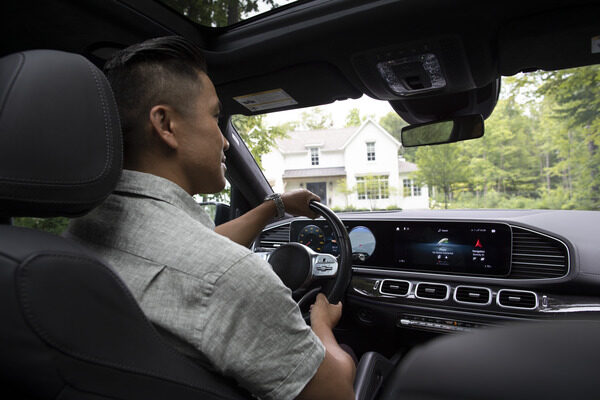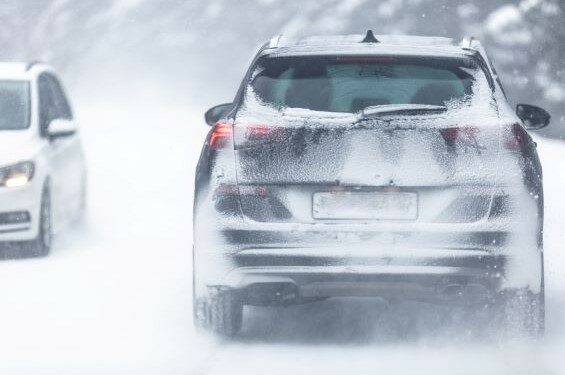
Who doesn’t get a little edgy driving near a semi on the highway or sharing the road with cyclists? More than 250,000 accidents between passenger cars and 18-wheelers happen each year – with auto drivers contributing to over 70% of the crashes.
Many of these collisions could be avoided – and fears reduced – if car drivers knew how to share the road safely.
Rules of the road when driving near a semi
Driving near and passing an 18-wheeler is different than sharing the road with a standard-sized vehicle. Since the truck is bigger:
- Their blind spot is bigger
- They need more space to maneuver
- They require more time and distance to stop
- It takes more time to pass them
Passing a truck
When passing a truck, maintain a safe and steady speed, keeping the cab of the truck in your rear-view mirror before pulling in front of it. Pass on the left to maximize visibility and ensure there’s enough space between your car and the truck when you merge back over.
Getting passed by a truck
If a truck attempts to pass you, reduce your speed slightly to make it easier for the truck to get around your vehicle.
When a truck is backing up
Never pass behind a truck preparing to back up or is backing up. Otherwise, you may enter a blind spot for you and the trucker.
When a truck is making a wide turn
When turning right, some trucks must first swing left to negotiate the turn. As a result, they can’t see cars directly behind or beside them, so cutting to the right of the turning truck can cause an accident.
When you’re driving near a truck
When driving near a truck, don’t use your bright headlights. The truck’s large side mirrors reflect brights into the driver’s eyes causing temporary blindness.
Top unsafe driving habits
The U.S. Department of Transportation ranked the most unsafe driving acts for car drivers to engage in when trucks are nearby:
- Distracted driving (texting, fatigue, etc.)
- Improper merging into traffic, causing a truck to maneuver or brake quickly
- Failure to stop at a light or stop sign
- Failure to slow down in a construction zone
- Driving at unsafe speeds (misjudging truck’s speed or approaching too fast from the rear)
- Following a truck too closely
- Failure to slow down in inclement weather
- Changing lanes too abruptly in front of a truck
- Driving in a truck’s “no zones” – left rear quarter, right front quarter and directly behind
- Unsafe turning, primarily turning with insufficient headway
Taking extra precautions around bikes
Safe driving starts with mutual respect and consideration among all parties on the road. Motorists and cyclists share the same rights and must develop an understanding about safe driving practices. Just because a car is physically larger than a bicycle does not mean its driver is more entitled to the road than the cyclist—and just because a bicycle is more nimble than a car doesn’t mean its operator can bypass basic laws.
The following are safety recommendations for automobile drivers and bicyclists, courtesy of the League of American Bicyclists and SafetyXChange, an online community in which ideas about safety practices are shared. The group’s advisory board includes John Henshaw, former head of the Occupational Safety and Health Administration (OSHA).
For motorists
Keep a safe distance
Smaller vehicles like bikes can stop quickly and abruptly. At night, they’re more difficult to see, even with reflectors and headlights, so it’s challenging to determine your distance. Err on the side of caution.
Always anticipate
Cyclists often require both hands to control the bike, so they sometimes can’t use hand signals when turning. Be prepared for unexpected shifts.
Pass with care
When it’s clear to pass, allow plenty of room in case the cyclist strays from his or her lane. Many state laws specify at least three feet of clearance.
Recognize their rights
Cyclists have the same rights to the road as drivers, regardless of their speed.
For cyclists
Know the law
Learn your state traffic rules and abide by them. You have the same right to the road as cars, and you also must practice the same responsibilities and follow local traffic codes. That means obeying traffic signals and stop signs. (The League keeps a searchable database of Smart Cycling classes here.)
Increase visibility
Wear bright colors and use reflective devices and safety flags. For the front of your bike, white lights work well. For the back, try a red light.
Find the proper fit
Fatalities often occur because a bike is too large or small for the cyclist to control.
Don’t hog the road
Intentionally crowding the lane may unnerve a motorist. When riding as a group, form a single-file line instead of cruising side-by-side. Don’t ride on sidewalks, which are for pedestrians.
Be predictable
Try to stay in a straight line. Signal your turns when you can, and check behind you before turning or changing lanes.
Protection is key
Never, ever ride without a helmet.
When you share the road with a big rig or a nimble bike, knowing dangers and how to address them can ease your fears and reduce your odds of an accident. Check out even more safe driving tips from Nationwide to make sure you’re as protected on the road as possible.



